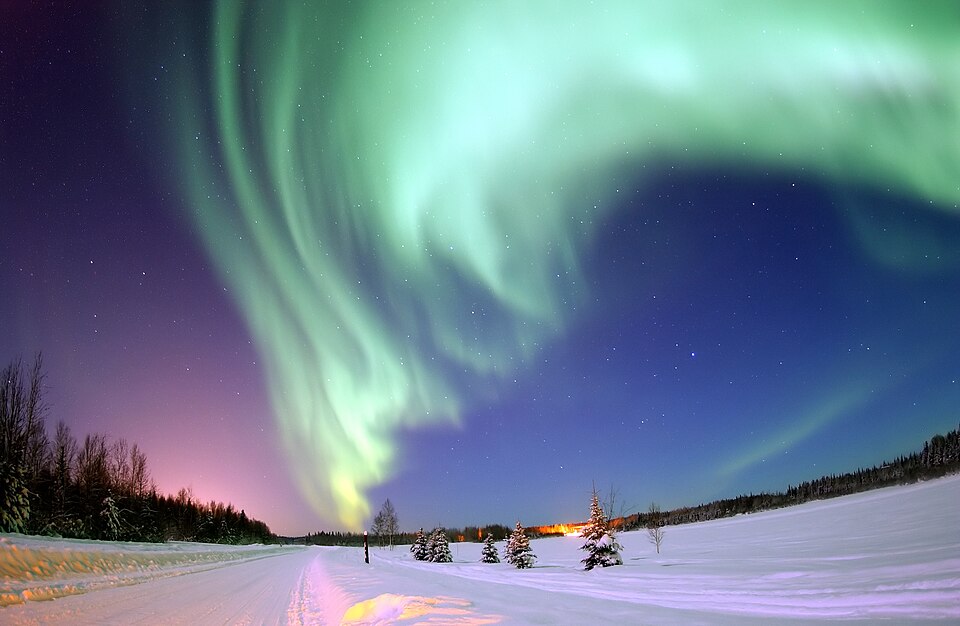Indian Scientists Unravel Aurora Mystery in Ladakh After Solar Storm

On May 10, 2024, the serene skies of Ladakh erupted in a mesmerizing display of auroras, captivating residents of Hanle village who witnessed the phenomenon for the first time in decades. The vibrant curtains of green and red were the result of unprecedented solar activity, specifically a series of six massive Coronal Mass Ejections (CMEs) that unleashed charged particles from the Sun towards Earth. This event not only created a stunning visual spectacle but also posed significant scientific questions regarding the interaction of solar phenomena with Earth's environment.
The Indian Astronomical Observatory in Hanle, led by Dr. Wageesh Mishra from the Indian Institute of Astrophysics (IIA), played a pivotal role in decoding the complexities of this solar event. Utilizing data from several international space agencies, including NASA and the European Space Agency (ESA), Dr. Mishra and his team analyzed the journey of solar particles and their impact on Earth's magnetic field. Soumyaranjan Khuntia, a doctoral scholar at IIA, explained, "Using wide-field coronagraphic data and the Flux Rope Internal State (FRIS) model, we tracked the temperature, magnetic fields, and structural changes of the CMEs as they traversed interplanetary space."
Historically, CMEs are understood to initially release heat as they travel away from the Sun; however, the observations from Ladakh revealed a surprising twist. Instead of cooling as expected, the CMEs began to absorb heat midway through their journey, maintaining a nearly constant temperature upon reaching Earth. This phenomenon, termed “thermal restructuring,” suggests that interactions among CMEs can significantly affect their properties and the resulting space weather.
The data from NASA's Wind spacecraft indicated that the plasma cloud reaching Earth contained unique double flux ropes, a rare configuration of tangled magnetic structures that can lead to intense geomagnetic disturbances. Khuntia noted, "These double flux ropes compressed magnetic fields in unusual ways, resulting in powerful geomagnetic storms that pushed auroras much farther south than typically observed."
Understanding these solar phenomena is crucial for several reasons. While beautiful, solar storms can pose serious hazards, disrupting satellite operations, power grids, and navigation systems. Dr. Mishra emphasized the necessity of this research, stating, "This study is unique for both India and internationally, as it explores whether thermal properties can serve as precursors to forecast intense geomagnetic disturbances."
Published in the prestigious Astronomy and Astrophysics Journal, this research marks a significant advancement in India's capability to monitor and predict space weather. Co-author Anjali Agarwal highlighted, "This work represents an important step toward understanding how evolving CME structures disturb Earth's space environment and could revolutionize space weather forecasting."
As scientists delved deep into their analysis, the residents of Hanle continued to share stories of the night the sky danced. For them, it was a once-in-a-lifetime event; for the scientific community, it provided a wealth of valuable data. The May 2024 solar storm serves as a poignant reminder of the interconnectedness of planetary bodies and the Sun, illustrating how solar activity can have far-reaching effects across the solar system. As India strengthens its position in solar research, studies like this not only advance scientific knowledge but also connect contemporary observations with humanity's ancient fascination with the cosmos. The Sun, 150 million kilometers away, continues to remind us of its power and unpredictability, influencing technologies that form the backbone of modern life.
Advertisement
Tags
Advertisement





